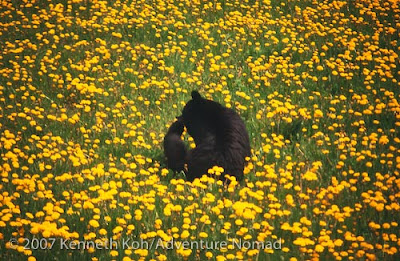 Well, after the bad experience of having one of my images taken from Flickr and used without my permission, I have to say that Flickr may be good for something after all. Lonely Planet saw this image of mine on Flickr and is considering using it for one of their travel guides.
Well, after the bad experience of having one of my images taken from Flickr and used without my permission, I have to say that Flickr may be good for something after all. Lonely Planet saw this image of mine on Flickr and is considering using it for one of their travel guides. I’ve heard it said that the only 100% way to safeguard your images is to never show them to anyone, and after having heard more horror stories, I’m going to be much more careful from now on, and so should you.
First, some copyright basics:
Your copyright is secured automatically upon creation of the image. You do not have to do anything else, like registering the image with a copyright office. A copyright means that only you have the right to copy the image, distribute it, display it in public, etc.
It is not a requirement, but to ensure there is no misunderstanding, you should have a form of notice to the public that the image is protected by copyright. This notice should contain these three items:
a. the word “Copyright” or the symbol ©;
b. the year of first publication; and
c. the name of the owner of the copyright.
Here’s some advice that might help protect you and your images on Flickr and other photo sharing sites. If you are using Flickr to archive or back-up hi-res files of your images, then only step one will be useful to you.
1. Under Flickr’s ‘Permissions and Privacy’, change who can download your photos to ‘Only You’. This will hide the “All Sizes” button and deny access to your image’s larger sizes. Unfortunately, there are hacks to work around this, but at least, this step is easy to do and will make it tougher to steal an image.
2. Upload the smallest size necessary. I’m considering uploading images that are just 500px at its longest edge. This is the medium image size and the default size that Flicker shows. Should someone download it, the file size will not be a big enough for printing.
3. Reduce the quality to the minimum needed for display. Be careful with this, you don’t want to reduce the quality so much that your photos look bad. A setting of Medium or around 50% should work for most images around 500px long. A higher quality may be needed for larger images.
4. Watermark your image with the copyright notice. I use Lightroom, which allows me to put in a small watermark easily. But a small watermark can easily be cropped out. A large watermark will deface your image, but will also make it much more difficult for someone to edit out.

No comments:
Post a Comment